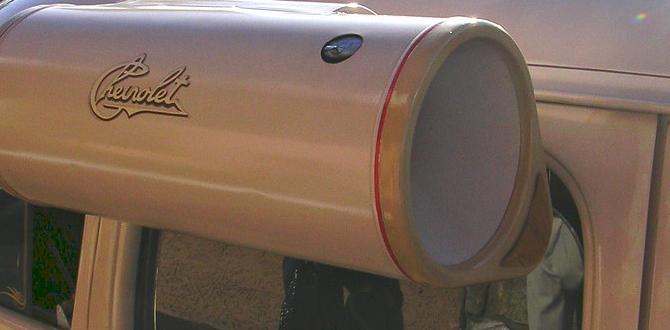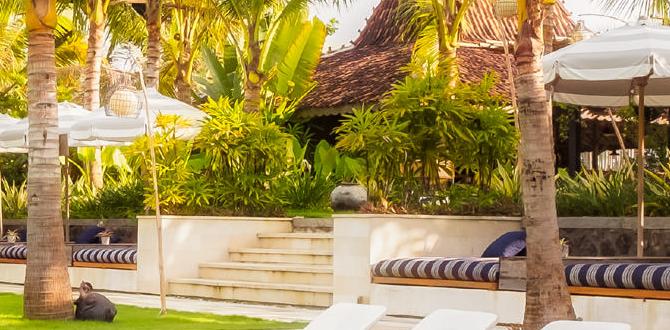Planning an Agra road trip needs careful preparation to ensure a smooth and enjoyable journey. This guide provides essential tips for creating a solid base for your adventure. From checking your vehicle to packing smart and understanding local nuances, we cover everything a beginner needs for a stress-free trip to the Taj Mahal and beyond
Embarking on a road trip to Agra can feel a little daunting, especially if it’s your first time navigating the Indian highways. The thought of packing, vehicle checks, and knowing what to expect can be overwhelming. But don’t worry, we’re here to make it simple!
Think of this as your friendly travel companion, guiding you through every easy step. We’ll cover all the essentials so you can focus on the excitement of seeing the magnificent Taj Mahal grow closer. Get ready for a journey filled with comfort and memorable moments, minus the travel stress.
Your Pre-Trip Checklist: Laying the Foundation for a Smooth Agra Road Trip
Before you even think about hitting the road, a little bit of preparation goes a long way. A well-prepared trip is a happy trip! We’ll break down the crucial steps to get you road-ready for your Agra adventure.
1. Vehicle Check: Ensuring Your Ride is Road-Worthy
Your car is your trusty steed on this journey, so making sure it’s in top condition is the very first step. A little attention now can save a lot of headaches later. Think of it as giving your car a health check-up before a big adventure.
Essential Vehicle Checks:
- Tires: Check tire pressure and tread depth. Properly inflated tires improve fuel efficiency and safety. Visit NHTSA’s tire safety page for detailed information.
- Brakes: Listen for any strange noises and ensure the brake pedal feels firm.
- Fluids: Top up engine oil, coolant, brake fluid, and windshield washer fluid.
- Lights: Test headlights, taillights, brake lights, and turn signals.
- Wipers: Ensure your wipers are in good condition and clean your windshield effectively.
- Battery: Check for corrosion on terminals and ensure it’s securely fitted.
If you’re not mechanically inclined, it’s wise to get a professional mechanic to give your car a once-over. A pre-trip service can identify any potential issues before they become a problem on the road.
2. Route Planning: Navigating Your Way to Agra
Knowing where you’re going is half the battle! Planning your route helps you estimate travel time, identify potential stops, and avoid getting lost. For an Agra road trip, most travelers will head from Delhi or nearby cities.
Popular Routes to Agra:
- From Delhi: The Yamuna Expressway is the most popular and efficient route. It’s a well-maintained, access-controlled highway.
- From Jaipur: You can take National Highway 21 and then connect to Agra via National Highway 44 or other state highways depending on the exact starting point.
It’s a good idea to use a GPS navigation app like Google Maps or Waze. Download offline maps in case you encounter areas with poor network connectivity. This is a lifesaver when you’re relying solely on your phone!
Consider the time of day you plan to travel. Starting early in the morning often helps beat city traffic and allows you to reach your destination with daylight to spare. Planning to arrive before sunset is always a good idea.
3. Essential Documents: Keeping Everything in Order
Just like you wouldn’t travel without your passport, your car and personal documents are crucial for a road trip. Having them readily accessible ensures a smooth experience, especially if you encounter any checks.
Documents to Carry:
- Vehicle Registration Certificate (RC)
- Car Insurance Papers
- Driving License (DL)
- Pollution Under Control (PUC) Certificate
- Personal Identification (Aadhaar Card, Voter ID, Passport)
- Emergency Contact Information
Keep these documents in a clear pouch or folder. Some of these can be stored digitally on your phone or in cloud storage, but always have physical copies as a backup, as digital formats might not always be accepted.
4. Packing Smart: Comfort and Convenience on the Road
What you pack can significantly impact your comfort and enjoyment. For a road trip, think about essentials that cater to long hours on the road and potential stops.
On-the-Go Comfort Essentials:
- Comfortable Clothing: Lightweight, breathable fabrics are best, especially for the Indian climate.
- Footwear: Easy slip-on shoes or comfortable walking shoes.
- Travel Pillow and Blanket: For naps during the drive or at rest stops.
- First-Aid Kit: Stocked with essential medicines, bandages, antiseptic wipes, and any personal prescriptions.
- Snacks and Water: Beat hunger pangs and stay hydrated. Pack reusable water bottles!
- Entertainment: Music playlists, podcasts, audiobooks, or games for passengers.
- Power Bank/Car Charger: Keep your devices charged.
- Hand Sanitizer and Wet Wipes: Essential for hygiene on the go.
- Sunscreen, Hats, and Sunglasses: For protection against the sun.
For families, consider packing extra entertainment, snacks, and comfort items for children. Parents can find peace of mind knowing they have child diapers readily available for unexpected needs during long drives. Similarly, adults who require them can pack adult diapers or travel-friendly diaper solutions for a stress-free journey, ensuring comfort and discretion.
5. Budgeting and Finances: Managing Your Trip Expenses
A little financial planning ensures you won’t run into any unexpected monetary snags. Think about fuel, food, potential tolls, and entry fees.
Budgeting Breakdown:
Consider the following as part of your budget:
- Fuel Costs: Estimate based on your car’s mileage and the distance to Agra.
- Toll Charges: Highways like the Yamuna Expressway have toll fees. Keep cash or a FASTag handy. You can check toll rates on official highway authority websites.
- Food Expenses: Factor in meals at dhabas, restaurants, and snacks.
- Accommodation: If you plan to stay overnight, book in advance.
- Attraction Tickets: The Taj Mahal and other sites have entry fees.
- Miscellaneous: Parking, unexpected purchases, etc.
Always carry some emergency cash, as not all small vendors or places might accept digital payments. A credit or debit card for larger expenses is also wise.
On the Road: Tips for a Comfortable and Safe Journey
Once you’re packed and ready, the real adventure begins! These tips focus on making your time on the road as comfortable, safe, and enjoyable as possible.
1. Driving Etiquette and Road Safety in India
Driving in India can be an experience! Understanding and adhering to general road safety rules is paramount. Patience and awareness are your best friends.
Key Safety Tips:
- Maintain a Safe Distance: Keep sufficient space between your vehicle and the one in front.
- Adhere to Speed Limits: Especially crucial on expressways and through towns.
- Use Indicators: Signal your intentions clearly to other drivers.
- Be Aware of Your Surroundings: Watch out for other vehicles, cyclists, pedestrians, and stray animals.
- Avoid Distractions: No phone calls or texting while driving.
- Take Regular Breaks: Stop every couple of hours to avoid fatigue. Stretch your legs!
- Night Driving Caution: If possible, avoid extensive night driving on unfamiliar roads.
For road safety guidelines and regulations in India, the Ministry of Road Transport and Highways (MoRTH) website is an excellent resource.
2. Navigating Tolls and Rest Stops
Tolls are a common feature on Indian highways, and rest stops are your opportunities to recharge and refuel.
Managing Tolls:
- FASTag: If your car is equipped with a FASTag, ensure it’s adequately funded. This significantly speeds up crossing toll plazas.
- Cash: Keep sufficient cash handy for tolls if you don’t have a FASTag or if it malfunctions.
- Toll Plaza Awareness: Be aware of designated lanes for different payment methods.
Rest Stop Strategy:
Well-maintained rest stops are available along popular routes like the Yamuna Expressway. These offer:
- Fuel Stations: To refuel your vehicle.
- Washrooms: For personal needs.
- Food Outlets: From small dhabas to larger restaurants.
- Small Shops: For snacks, water, and basic necessities.
These stops are perfect for a quick break to stretch, grab a bite, and let everyone in the car relax.
3. Staying Hydrated and Nourished on the Road
Long drives can dehydrate you quickly. Keeping up with fluids and having healthy snacks is key.
Hydration and Food Tips:
- Carry Plenty of Water: Reusable bottles are great for the environment and your wallet.
- Electrolyte Drinks: Consider carrying ORS or electrolyte powders to mix with water, especially in hot weather, to replenish lost salts.
- Healthy Snacks: Pack fruits, nuts, granola bars, and simple sandwiches. Avoid overly greasy or heavy foods that can make you feel sluggish.
- Mindful Eating at Stops: When eating out, opt for freshly cooked meals.
Remember, if you or a family member uses adult diapers or child diapers, ensure they are accessible from your travel bag without needing to unpack extensively. This ensures quick comfort and reduces stress during stops.
4. Entertainment and Downtime
Keeping everyone (especially kids!) entertained can make a huge difference to the perceived length of the journey.
Ideas for Entertainment:
- Curated Playlists: Create music playlists for different moods.
- Podcasts and Audiobooks: Great for both drivers and passengers.
- Car Games: Classic games like “I Spy,” “20 Questions,” or license plate games.
- Interactive Apps: Educational apps or engaging games on tablets.
- Travel Journal: Encourage older kids (or adults!) to document their journey.
Allow for moments of quiet too. Sometimes simply enjoying the changing scenery is entertainment enough.
Arriving in Agra: Final Preparations
You’re almost there! A few final checks before you reach Agra will ensure your arrival is as smooth as your journey.
1. Accommodation: Pre-Booking Your Stay
Booking your hotel or guesthouse in advance is highly recommended, especially during peak tourist seasons. This saves you the hassle of searching for a place upon arrival, tired from your drive.
Booking Tips:
- Location: Consider proximity to major attractions like the Taj Mahal.
- Amenities: Check for parking, Wi-Fi, and other facilities you might need.
- Reviews: Read recent reviews from other travelers.
2. Local Transport and Navigation within Agra
Once you’re in Agra, you’ll need to get around to see the sights. Your car might be useful, but traffic and parking can be challenges.
Getting Around Agra:
- Your Car: Convenient for reaching your hotel and exploring slightly further afield. However, parking near major attractions can be difficult and expensive.
- Auto-rickshaws and Cycle-rickshaws: Readily available for short trips within the city. Agree on the fare beforehand.
- Taxis/Ride-Sharing: Apps like Uber and Ola operate in Agra.
- Local Buses: An economical option for reaching various parts of the city.
Be aware that vehicles are often restricted from entering the immediate vicinity of the Taj Mahal. You might need to park at a designated lot and walk or take an electric rickshaw.
3. Understanding Local Nuances and Etiquette
Familiarizing yourself with local customs and common practices will enhance your experience and help you navigate smoothly.
Things to Note:
- Bargaining: It’s common practice in markets and with auto-rickshaws. Be polite but firm.
- Dress Code: While Agra is a tourist hub, dressing modestly, especially when visiting religious sites, is respectful.
- Photography: Be mindful of where you can and cannot take photos. Photography is prohibited inside the Taj Mahal mausoleum itself.
- Tipping: While not mandatory everywhere, tipping is appreciated for good service in hotels and restaurants.
Travel Comfort for All: Solutions for Peace of Mind
Travel comfort is subjective, but for many, a crucial aspect is ensuring dignity and ease during their journey, especially when dealing with personal care needs.
1. Adult Diapers for Stress-Free Travel
For adults managing incontinence, travel can sometimes be a source of anxiety. Choosing the right adult diapers can make a significant difference.
Choosing the Right Adult Diapers:
- Absorbency: Select based on your needs – light, moderate, or heavy.
- Fit: A snug, comfortable fit prevents leaks and chafing.
- Discreetness: Modern adult diapers are designed to be discreet under clothing.
- Breathability: Look for materials that allow air circulation for comfort.
Having a pack of travel-friendly diaper solutions ensures you are prepared for long drives or unexpected delays, allowing you to focus on enjoying your trip rather than worrying about potential discomfort or accidents.
2. Child Diapers for Traveling Families
Parents know well that trips with young children require extra planning. Having enough child diapers is a non-negotiable for many.
Tips for Diapering on the Go:
- Plenty of Stock: Pack more diapers than you think you’ll need.
- Easy Access: Keep a small bag of diapers and wipes in your accessible travel bag or car.
- Portable Changing Pad: For hygienic changes at rest stops.
- Diaper Disposal Bags: For discreetly disposing of used diapers.
Being well-equipped with child diapers removes a significant stressor, allowing parents to be more relaxed and present during the road trip experience.
Frequently Asked Questions
Q1: What is the best time of year to take a road trip to Agra?
A1: The best time is generally from October to March when the weather is pleasant and cool, ideal for sightseeing and driving. Summers (April to June) can be very hot. Monsoon (July to September) brings rain, which might affect road conditions and tourism.
Q2: How long does the road trip from Delhi to Agra typically take?
A2: On the Yamuna Expressway, the journey can take around 3 to 4 hours, depending on traffic and your stopovers. It’s approximately 230-240 kilometers.
Q3: Are there good places to eat on the way to Agra?
A3: Yes, the Yamuna Expressway has several well-maintained tourist plazas and rest stops that offer a variety of food options, from local dhabas to more established eateries. You can also find roadside eateries on other routes.
Q4: Is it safe to drive on Indian highways at night?
A4: While highways are generally better lit and maintained, it is advisable to avoid extensive night driving, especially on unfamiliar routes, due to potentially reduced visibility, unpredictable traffic, and stray animals.
Q5: What are the essential items I must pack for an Agra road trip?
A5: Essential items include comfortable clothing, vehicle documents (RC, Insurance, DL), a first-aid kit, water bottles, snacks, a power bank, personal identification, and any required personal care items like adult diapers or child diapers.
Q6: Can I take my own car inside the Taj Mahal complex?
A6: No, vehicles are not allowed inside the Taj Mahal complex. You will need to park your car at designated parking lots outside and then walk or use an electric rickshaw to reach the monument.





